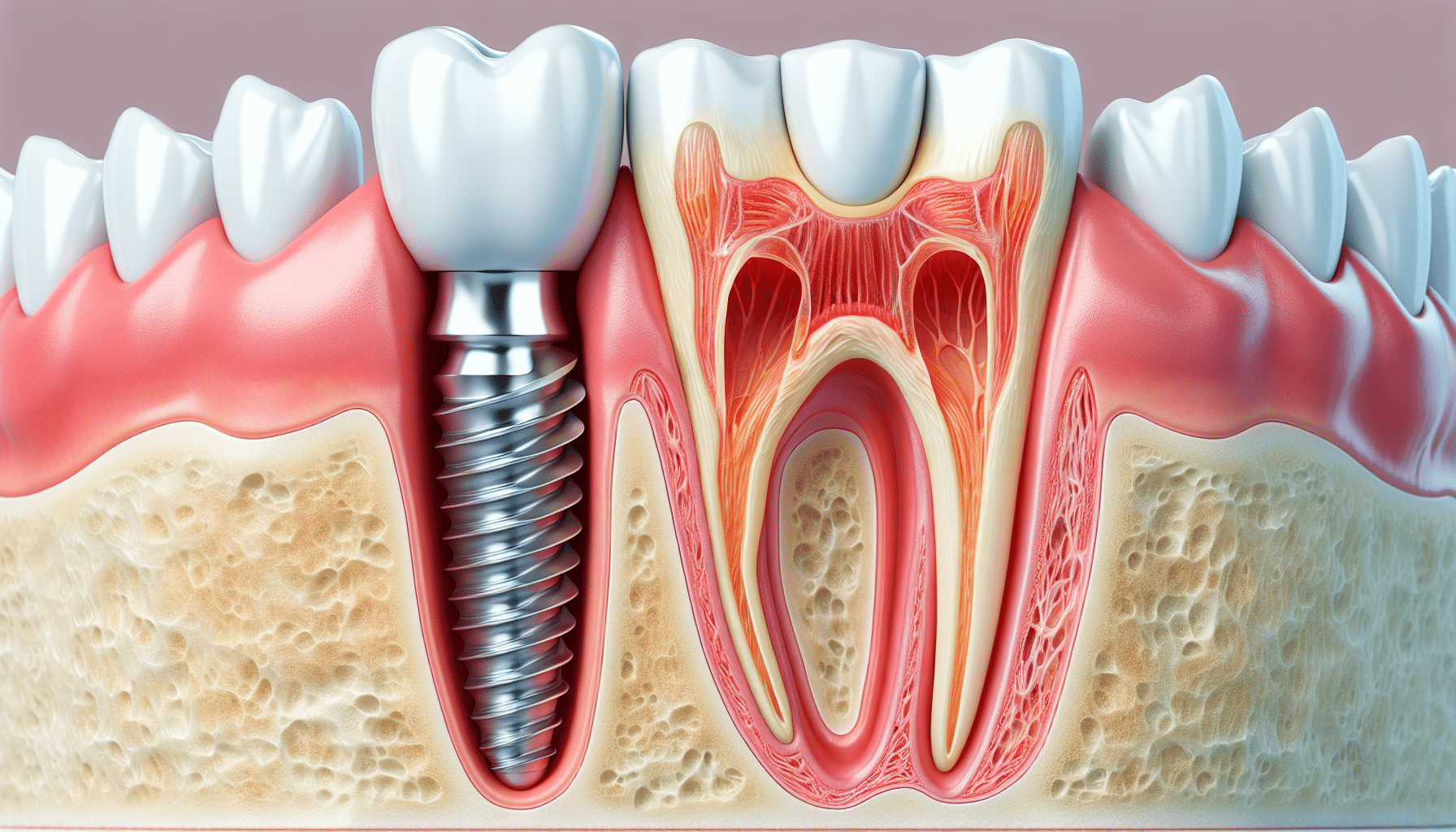Dental Sense Fundamentals Explained
Dental Sense Fundamentals Explained
Blog Article
Facts About Dental Sense Revealed
Table of ContentsOur Dental Sense PDFsDental Sense Fundamentals ExplainedThe Ultimate Guide To Dental SenseThe smart Trick of Dental Sense That Nobody is Talking About
are medical gadgets surgically implanted into the jaw to recover a person's ability to eat or their look. They offer assistance for fabricated (fake) teeth, such as crowns, bridges, or dentures. When a tooth is lost due to injury or illness, an individual can experience complications such as rapid bone loss, defective speech, or modifications to eating patterns that cause discomfort.Dental implant systems contain an oral implant body and dental implant joint and might also consist of a joint fixation screw. Front tooth filling. The dental implant body is surgically placed in the jawbone instead of the tooth's root. The dental implant joint is normally connected to the dental implant body by the joint fixation screw and extends via gums into the mouth to support the connected artificial teeth
(https://profile.hatena.ne.jp/dentalsense1/)Framework of The Dental Implant System selecting dental implants, talk with your oral copyright regarding the possible benefits and dangers, and whether you are a candidate for the treatment. Things to consider: Your overall wellness is an important consider identifying whether you are an excellent candidate for oral implants, how much time it will certainly require to heal, and for how long the dental implant may remain in place.
Cigarette smoking might affect the healing process and reduce the long-term success of the implant. The recovery process for the dental implant body might take numerous months or longer, throughout which time you usually have a short-term abutment instead of the tooth. the oral implant treatment: Very carefully adhere to the oral hygiene instructions provided to you by your oral copyright.
Dental Sense Things To Know Before You Buy
Implant failure can result in the need for an additional surgery to take care of or change the implant system. Restores the ability to eat Recovers cosmetic appearance Helps maintain the jawbone from shrinking due to bone loss Maintains the health and wellness of the bordering bone and gums Aids maintain nearby (neighboring) teeth secure Boosts high quality of life Damage to surrounding natural teeth throughout dental implant placement Injury to the surrounding tissues throughout surgery, such as sinus perforation Injury throughout surgery (for instance, fracture of surrounding jawbone) Poor function, such as seeming like the teeth do not attack together typically A feeling that the tooth is loose or turning in position arising from an abutment screw loosening Implant body failing (looseness of the implant body) because of systemic infection, which might be most likely in patients with uncontrolled diabetes as a result of regional infection in bone and periodontals supporting the implant body as a result of postponed healing, which might be more probable in clients who smoke Difficulty cleaning the gum tissues around the dental implant, resulting in inadequate oral health Untreated periodontal disease Post-surgical feeling numb as a result of nerve impingement or damage Always alert health treatment companies and imaging professionals that you have oral implants prior to any type of magnetic vibration imaging (MRI) or x-ray procedures.
FDA is not knowledgeable about any type of negative events reported for MRI or x-ray procedures with dental implants. Dental implants systems are normally made from products that follow global agreement requirements of the International Company for Standardization (ISO) or ASTM International. These requirements have details of what makes a risk-free product.

An oral implant is a framework that replaces a missing tooth. With screw-like gadgets, the doctor inserts an implant into the jawbone, and it acts as a support for a man-made tooth, called a crown. A tool called a joint links the man-made tooth to the dental implant. The crown is custom-made look what i found to fit the person's mouth and match the shade of their teeth.
The Single Strategy To Use For Dental Sense
Some people are not qualified for oral implant surgery. It is for dental specialists to operate on individuals with: intense illnessuncontrollable metabolic diseasebone or soft cells disease or infectionIf these issues are fixed, a person can have the surgical procedure. In, dental cosmetic surgeons avoid operating people with: If people with any of the above undertake dental implant surgery, there is a higher risk of the implant failing.

Oral dental implant surgery is an individualized process. It's not the very same for everybody. However the following gives a basic review of what you can anticipate your dental practitioner, dental cosmetic surgeon, periodontist or prosthodontist to do: Position the dental implant surgically. Give you time to heal. Connect the message and last crown, bridge or denture.
Next off, your surgeon will thoroughly place the oral implant right into your jaw. If your dental implant is near the front of your mouth, your dental expert will make a short-lived tooth for you to use till you heal.
How Dental Sense can Save You Time, Stress, and Money.
Your provider can tell you what to anticipate in your circumstance. Throughout the healing phase, your jawbone needs to fuse to the dental implant. This procedure, called osseointegration, is crucial for security and long-lasting success. This procedure can take anywhere from 3 to nine months. In some instances, it may take much longer.
When your dental implant heals, your dentist can connect the joint (little adapter blog post) and your final repair (crown, bridge or denture). This typically takes concerning one hour to finish and may call for a second minor surgery. You shouldn't feel any type of pain during your dental implant procedure due to the fact that your copyright will certainly utilize medicine to numb your gums.
Report this page